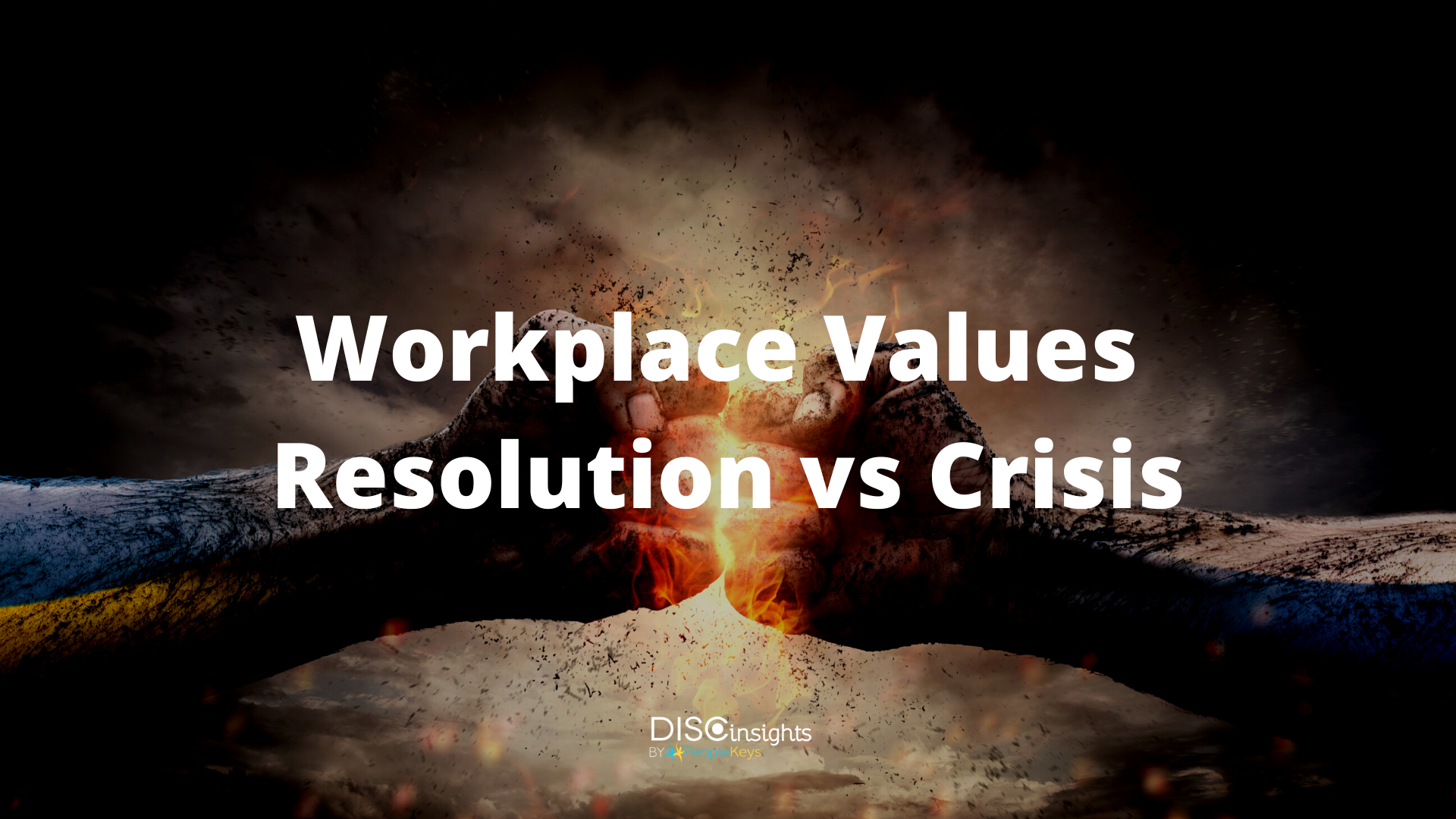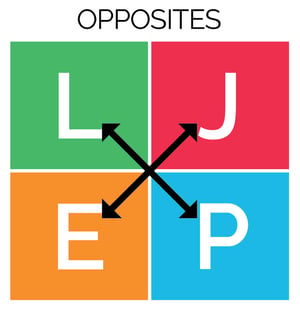- SHOP BY PRODUCT
- DISC TRAINING & CERTIFICATION TOOLS
- DISC RESOURCES
- BLOG
- SHOP BY PRODUCT
- DISC TRAINING & CERTIFICATION TOOLS
- DISC RESOURCES
- BLOG
- ALL ITEMS



Many questions have been asked about solving values crisis in the workplace, especially while using the Workplace Values profile. We cannot tell you how to resolve all values crisis, since these days there are so many, but we can tell you the sooner you can recognize and identify the values styles at work, the easier it is to avoid conflicts. In the Values profile (as with any values-related problem), the sooner you know what you are dealing with the easier it is to resolve. That is why certain situations we have been involved in trying to resolve, including the OSLO II Peace Accords, were difficult and are still unresolved since this is a historic, over 3,000-year-old values crisis. We can also say that 95% of values crisis intervention is doing it very early on and with as much information as possible.
 Of the four workplace Values we address, most corporate culture embraces two very distinct values: Loyalty and Justice. Companies want high Loyalty from employees (even though this is not always reciprocated) and they want Justice, or win-win situations. If your Values profile fits within these two parameters, chances are more likely you will stay in a job longer (lower turnover) than those with Equivalence or Personal Freedom values. Values is not like DISC where you can easily learn to adapt, modify, or blend your style to another person’s. Values are not easily compromised so it is not an effective strategy to blend or adapt… at least not for long-term success. It may work short-term, but the person who has to blend or adapt will eventually feel they “sold out” to their own values.
Of the four workplace Values we address, most corporate culture embraces two very distinct values: Loyalty and Justice. Companies want high Loyalty from employees (even though this is not always reciprocated) and they want Justice, or win-win situations. If your Values profile fits within these two parameters, chances are more likely you will stay in a job longer (lower turnover) than those with Equivalence or Personal Freedom values. Values is not like DISC where you can easily learn to adapt, modify, or blend your style to another person’s. Values are not easily compromised so it is not an effective strategy to blend or adapt… at least not for long-term success. It may work short-term, but the person who has to blend or adapt will eventually feel they “sold out” to their own values.
Here is a recap of the PeopleKeys’ defined four workplace values styles of Loyalty, Equivalence, Personal Freedom, and Justice (also known by the acronym LEPJ):
The two biggest conflicts come between people with high Loyalty and those with high Personal Freedom. High Loyalty believes in schedules, rules and procedures to follow. You can see why so many “S” and “C” personalities also have high Loyalty. This core value needs to maintain traditions and relationships through bad and good. “Ds” and “Is” can also have very high Loyalty, but how they express this might be much different. A “D” may show loyalty when someone is loyal in return, but if this doesn’t happen their “button” of being taken advantage of is pressed.
Equivalence and Justice can also be at the opposite ends of the spectrum, although it doesn’t necessarily have to be this way. Equivalence pushes to have fairness for all, and while Justice does not oppose this, Justice believes this “Equivalence” needs to be coupled with performance and responsibility.
We worked with a client in the music industry, where the CEO had extremely high Loyalty and Justice and he was working with a creative artist who had high Equality and Personal Freedom. The CEO wanted to fire this creative star because he could not keep his schedule, always missed deadlines, and had to always do things his own way rather than being a team player. Meanwhile, the artist believed he needed freedom to be creative, and he could not understand why the record company only gave him a small percentage of the revenues (2%) as a bonus when he was the one who would come up with ideas. To him, it should have been 50/50, and he was ready to quit.
As mentioned, some values crisis can never be resolved. I see this in maybe 20% of the cases I encounter, especially when one party refuses to change or even listen to any opinion outside their own. Here are some ground rules for successful resolution of values-driven conflict and you can download the full methodology below:
For other examples of resolved crisis situations, please send us a request and we will forward you the next in our series of conflict resolution strategies (and examples).

© PeopleKeys. All Rights Reserved
WORKING DAYS/HOURS
Mon - Fri / 8:30AM - 5:00PM EST
